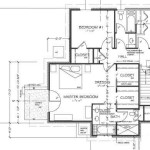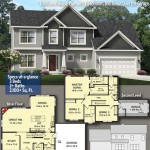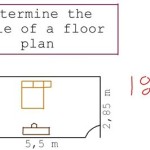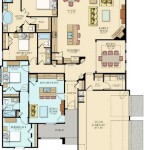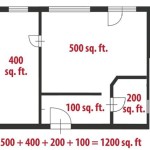Exploring House Plan Designs: What You Need to Know for Beginners
Building a house is a significant undertaking, both financially and emotionally. It represents a culmination of dreams, aspirations, and a desire to create a space that reflects your unique style and needs. One crucial initial step in this journey is choosing a house plan design. This intricate blueprint serves as the foundation upon which your dream home will be constructed. It lays out the architectural framework, including the layout, dimensions, and specifications of every room, hallway, and exterior feature. For beginners embarking on this exciting yet complex process, understanding the nuances of house plan designs is essential.
Types of House Plans
The world of house plan designs is vast and diverse, offering a multitude of styles, layouts, and functionalities to suit varying preferences and lifestyles. A basic understanding of the different types of house plans available can help you narrow down your choices and find the right fit for your needs. Here are some common types to consider:
- One-Story House Plans: These plans offer easy accessibility and are ideal for those seeking a less complex and easier-to-maintain living space. They typically feature bedrooms, bathrooms, and living areas all on a single level, eliminating the need for stairs.
- Two-Story House Plans: These plans provide a larger footprint, maximizing living space within a smaller lot. They often feature bedrooms on the upper level, offering privacy and creating a separation between the main living areas and sleeping quarters.
- Split-Level House Plans: Split-level homes are characterized by staggered levels, offering a blend of one- and two-story features. They often feature a living area on the main level, bedrooms on a lower level, and perhaps a family room or guest suite on an upper level.
- Modern House Plans: Modern designs emphasize clean lines, open floor plans, and an abundance of natural light. They often feature large windows, minimalist décor, and contemporary materials.
- Traditional House Plans: These plans draw inspiration from classic architectural styles, incorporating elements like elaborate detailing, symmetrical facades, and formal layouts. They are often characterized by a sense of history and craftsmanship.
Key Considerations When Choosing a House Plan
Beyond the type of house plan, several other factors should be carefully considered to ensure the chosen design meets your individual needs and preferences. These include:
1. Lifestyle and Family Size:
Your house plan should reflect your lifestyle and the size of your family. A growing family might require a larger plan with more bedrooms and bathrooms, while a single individual may prefer a cozy and efficient design. Consider your current and future needs when making this critical decision.
2. Budget:
House plans come in a wide range of price points. It's crucial to establish a budget before starting your search, as this will help you narrow down your options and avoid plans that are outside your financial reach. Remember, the cost of construction can fluctuate based on local building codes and material prices.
3. Lot Size and Shape:
The size and shape of your lot will significantly impact the house plan you choose. A smaller lot may require a more compact design, while a larger lot provides flexibility for a more expansive home. The orientation of the lot also plays a role, as it influences the placement of windows and doors for optimal natural light and ventilation.
4. Climate and Environment:
Consider the climate and environmental conditions of your location. In a hot climate, you may want a house plan with shaded patios, ample ventilation, and energy-efficient features. In a cold climate, features like insulation, large windows for passive solar heating, and a fireplace may be essential.
5. Personal Style and Preferences:
Ultimately, the house plan you choose should reflect your personal style and preferences. Do you prefer open floor plans or more defined spaces? What type of architectural style resonates with you? Explore various plan designs and gather inspiration from magazines, websites, and even home tours to find a style that truly speaks to you.
Resources for Finding and Modifying House Plans
Numerous resources are available to help you find the perfect house plan design. Online databases, architectural firms, and custom home builders offer a wide variety of options to choose from. You can filter your search by budget, style, size, and other criteria to narrow down your choices. Remember, many house plans are customizable, allowing you to make modifications to suit your specific needs and preferences. This might involve adding or removing rooms, adjusting dimensions, or altering the layout. Working closely with an architect or builder during this process is essential to ensure the modifications are feasible and meet building code requirements.
Exploring house plan designs is an exciting and rewarding journey that allows you to envision and create the home of your dreams. By carefully considering your needs, preferences, and the available resources, you can embark on this process with confidence and ultimately find a plan that will serve as the blueprint for your future home.

Simple House Plans Blog Homeplans Com

Draw Floor Plans In Minutes Create 2d And 3d

Exploring Types Of Floor Plan Layouts In Interior Design Drawings

Easily Create 2d 3d Floor Plans No Design Skills Required

3 Bedroom House Plans Layout With Garden S Parking Staircase

Two Bedroom Apartment Floor Plan 3d Layout Design Planner 5d

Advantages Of Integrating 3d Floor Plan Rendering In Architectural Design

House Plan Design Your Own Plans

Small House Plans We Love Houseplans Blog Com

Simple Modern House Floor Plan Template
Related Posts


